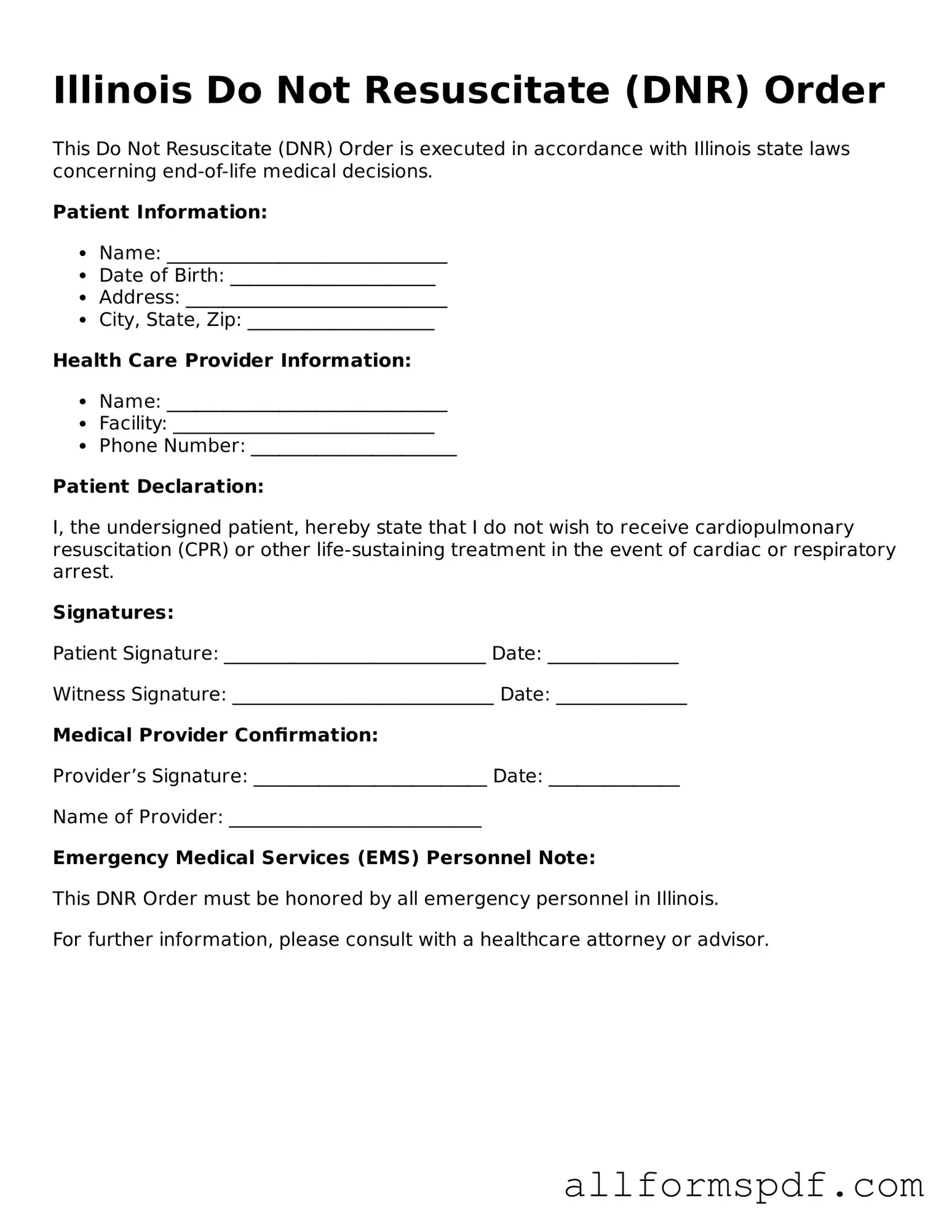Completing the Illinois Do Not Resuscitate (DNR) Order form is a critical step for individuals wishing to make their end-of-life preferences clear. However, many people make mistakes that can lead to confusion or legal issues. Understanding these common pitfalls can help ensure that the form accurately reflects one's wishes.
One frequent mistake is failing to sign the form. The DNR Order is not legally binding unless it is signed by the patient or their authorized representative. This signature is essential, as it confirms that the individual understands the implications of the order. Without it, medical personnel may not recognize the DNR wishes during a medical emergency.
Another common error is neglecting to date the form. A DNR Order should always be dated to establish when the wishes were documented. This date is crucial, as it helps avoid disputes about whether the order is current or reflects the individual's most recent intentions. An undated form may create uncertainty for healthcare providers.
Some individuals also forget to provide clear identification. The form should include the patient's full name and any relevant identification numbers, such as a driver's license number or Social Security number. This information helps healthcare providers verify the patient's identity and ensures that the order is honored correctly.
Additionally, people often overlook the importance of discussing the DNR Order with family members and healthcare providers. Open communication about end-of-life wishes can prevent misunderstandings and ensure that everyone involved is aware of the patient's preferences. Without these discussions, family members may feel uncertain or conflicted during a medical crisis.
Another mistake is using outdated forms. It is vital to use the most current version of the Illinois DNR Order form. Laws and regulations can change, and using an outdated form may lead to complications in honoring the DNR wishes. Always check for the latest version before filling out the form.
Lastly, individuals may not review the form regularly. Life circumstances can change, and so can a person's wishes regarding resuscitation. It is important to periodically revisit the DNR Order to ensure it still aligns with the individual's current desires. A form that reflects outdated preferences may not serve its intended purpose.
By avoiding these common mistakes, individuals can ensure that their DNR Order accurately represents their wishes and is respected by medical personnel. Taking the time to fill out the form correctly can provide peace of mind for both the individual and their loved ones.
